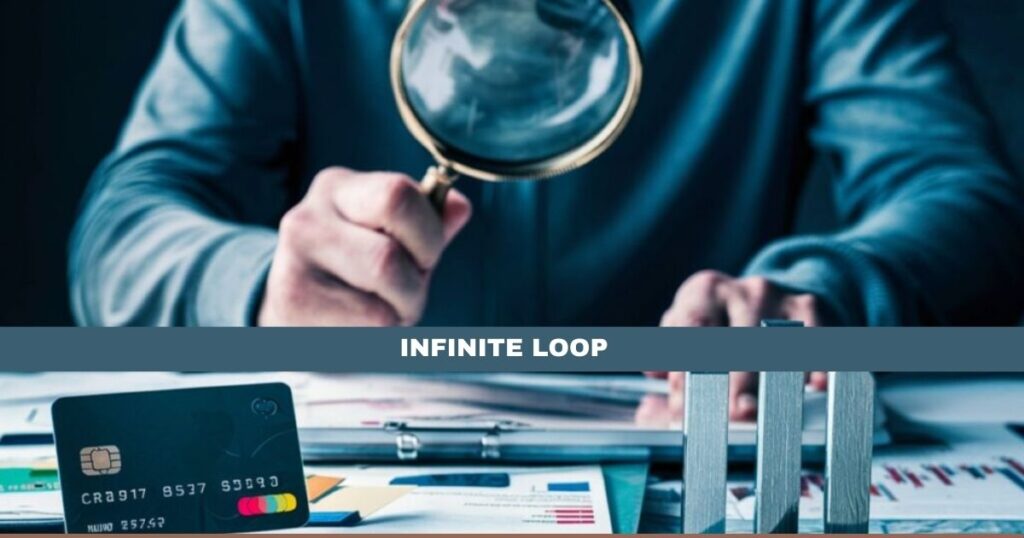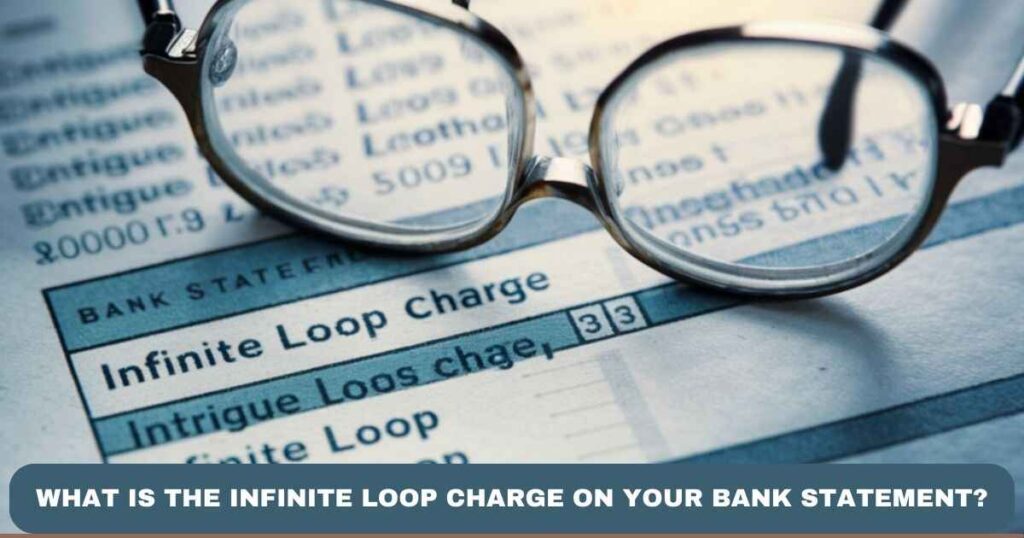In today’s fast-paced world of digital transactions and automated payments, it’s not uncommon to encounter puzzling entries on your bank statement.
One such enigmatic charge that often leaves people scratching their heads is the “Infinite Loop” charge.
But fear not, for we’re here to shed light on this mysterious transaction and equip you with the knowledge to navigate your finances with confidence.
What is the Infinite Loop Charge?
The Infinite Loop charge on your bank statement is like a recurring guest that just won’t leave the party. It’s a transaction that seems to repeat endlessly, without any clear endpoint in sight.
You might think of it as a subscription fee that keeps haunting your finances month after month, without your explicit consent.
But what exactly triggers this loop? Typically, the Infinite Loop charge is tied to ongoing services or subscriptions that automatically deduct funds from your account at regular intervals.
Whether it’s a streaming platform, a gym membership, or a software subscription, these charges can sneakily find their way into your statement, often catching you off guard.
Why is it called the “Infinite Loop” Charge?
The name “Infinite Loop” stems from the continuous and repetitive nature of the charge, mirroring the concept of an endless loop in programming.
Just like a loop that goes on indefinitely, this charge keeps reappearing on your bank statement month after month, leaving you in a perpetual cycle of deductions.
How may it affect your finances?

The appearance of the “Infinite Loop” charge on your bank statement can have significant implications for your finances.
Firstly, it may lead to unexpected deductions from your account, impacting your available funds and potentially causing budgetary strain.
Additionally, if left unchecked, the charge could result in repeated debits, leading to a cumulative financial burden over time.
Furthermore, recurring charges like the “Infinite Loop” can contribute to overspending if they are for services or subscriptions that you no longer utilize or need.
Without proper monitoring, these charges may continue unabated, draining your resources without providing corresponding value.
Moreover, the presence of unclear or unidentified charges on your bank statement can erode your trust in financial institutions and payment systems.
It may lead to confusion and frustration as you attempt to discern the origin and purpose of the charge, potentially requiring time-consuming efforts to rectify the situation.
Beyond the Surface: Delving Into the Significance of the “Infinite Loop” Charge on Your Finances
Curious about the “Infinite Loop” charge on your bank statement? Look beyond the surface; it holds more significance than meets the eye.
This recurring transaction may seem routine, but its impact on your finances can be profound. Delving deeper, you’ll uncover its implications—a continuous deduction that demands attention.
Understanding its origin and frequency is crucial for financial clarity. Don’t dismiss it as just another charge; explore its implications to empower your financial decisions.
Recommended Blog: Houston’s Commercial Real Estate Gem: Limestone Commercial Real Estate Houston TX
How to identify the Infinite Loop charge on your bank statement?
Identifying the Infinite Loop Charge might seem daunting at first, but with a little know-how, you can spot it like a pro:
- Look for Recurring Payments: Scan your bank statement for any recurring payments that seem unfamiliar. The Infinite Loop Charge could be a recurring fee for a service you’ve signed up for.
- Check Subscription Services: If you’re subscribed to any services like streaming platforms, gym memberships, or online tools, see if the charge matches any of those.
- Review Online Purchases: Sometimes online purchases can lead to unexpected charges. Look back at your recent online transactions to see if the Infinite Loop Charge relates to any of them.
- Contact Your Bank: If you’re still unsure about the charge, don’t hesitate to contact your bank. They can provide more information and help you understand where the charge is coming from.
- Monitor Your Statements: Keep an eye on your bank statements regularly to catch any unusual charges early. This way, you can address them promptly and avoid any further confusion.
Infinite Loop Charge Explained: What You Need to Know
Now that we’ve covered the basics, let’s delve deeper into understanding the Infinite Loop Charge and equip ourselves with the knowledge needed to manage it effectively.
Understanding the Nature of the Infinite Loop Charge
The Infinite Loop Charge is not just a random deduction from your bank account; it’s a symptom of the modern digital economy.
In an era where subscriptions and automated payments reign supreme, it’s easy for these charges to slip under the radar and accumulate over time.
Essentially, the Infinite Loop Charge signifies a recurring payment that loops indefinitely, hence the name.
It’s like a persistent guest who keeps showing up uninvited to your financial party, draining your resources with each appearance.
Common Sources of the Infinite Loop Charge
So, where does this Infinite Loop Charge come from? It can originate from a variety of sources, including:
- Subscription Services: Think streaming platforms, software subscriptions, magazine subscriptions, etc. These services often auto-renew without explicit consent, leading to the Infinite Loop Charge.
- Membership Fees: Gym memberships, club memberships, and other recurring memberships can result in the Infinite Loop Charge if not canceled or managed properly.
- Automatic Payments: Utility bills, insurance premiums, and other regular expenses set up for automatic payment can also contribute to the Infinite Loop Charge if not monitored closely.
The Importance of Vigilance
In the face of the Infinite Loop Charge, vigilance is key. Keeping a close eye on your bank statements and monitoring your expenses regularly can help you spot these charges early and take action to address them.
But vigilance goes beyond just checking your statements; it also involves actively managing your subscriptions and memberships.
Take the time to review your recurring expenses periodically and ask yourself if each subscription or membership is still serving its purpose. If not, it may be time to cancel or renegotiate.
Taking Control of Your Finances

Ultimately, the key to managing the Infinite Loop Charge lies in taking control of your finances. Here are some actionable steps you can take:
- Audit Your Expenses: Conduct a thorough review of your expenses to identify recurring charges and assess their necessity.
- Set Reminders: Use calendar reminders or budgeting apps to alert you to upcoming subscription renewals or membership fees.
- Negotiate Better Deals: Reach out to service providers to negotiate better rates or cancel unused subscriptions.
- Consider Alternatives: Explore alternative services or memberships that offer similar benefits at a lower cost.
By taking proactive measures to monitor and manage your finances, you can avoid falling into the Infinite Loop trap and ensure that your hard-earned money is put to good use.
Recommended Blog: Launching A Thriving Property Management Empire
Case Study: Sarah’s Infinite Loop Dilemma
Let’s take a look at a real-life example to illustrate the impact of the Infinite Loop Charge. Meet Sarah, a busy professional who signed up for a gym membership several years ago.
Initially, Sarah was dedicated to her fitness routine and made regular use of the gym facilities. However, as her work commitments increased, she found herself visiting the gym less and less.
Despite her dwindling attendance, Sarah continued to pay her monthly membership dues without giving it much thought.
It wasn’t until she reviewed her bank statement that she realized the extent of the situation. The gym membership had been quietly draining her bank account for months, resulting in a significant financial burden.
Upon discovering the Infinite Loop Charge, Sarah took immediate action. She canceled her gym membership and redirected those funds towards other aspects of her life that brought her more joy and value.
Through this experience, Sarah learned the importance of staying vigilant and actively managing her finances to avoid similar pitfalls in the future.
Conclusion
In conclusion, the Infinite Loop Charge may seem like a small inconvenience, but its implications can have a significant impact on your financial well-being.
By understanding its nature, identifying common sources, and taking proactive steps to manage it, you can regain control of your finances and avoid falling into the Infinite Loop trap.
Remember, staying vigilant and actively managing your finances is the key to financial freedom and peace of mind.
So, keep an eye on those bank statements, question those recurring charges, and take control of your financial destiny!
Hey, Molar is the voice behind this all-encompassing blog, sharing expert insights and practical advice on business, real estate, and more. Dedicated to helping you navigate the complexities of these fields, Kelly provides the latest trends, in-depth analyses, and creative strategies to elevate your ventures.
